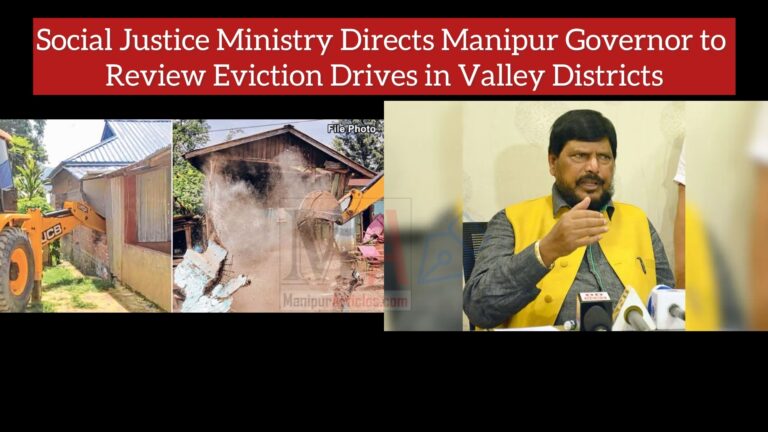Examining the Impact of Fake Content on Social Media: A Case from Manipur
In today’s age of social media, where everyone has a platform to voice their thoughts, misinformation can spread like wildfire. Recently, Manipur saw this unfold firsthand when two men were arrested for creating and posting a fake video on Facebook. This incident not only highlights the risks of spreading false information but also underscores the legal consequences for those who misuse social media for personal or deceptive motives.
The Background of the Incident
The story began with a video posted on Facebook, showing Iphamayum Ramijuddin, who claimed that he was assaulted and robbed of 500 chicks by unidentified individuals dressed in black. The incident supposedly took place in Phubala around 6:30 pm. However, after receiving information and conducting a thorough investigation, the police discovered that the entire account was fabricated.
Such incidents remind us of the power of social media—and the responsibility that comes with it. In this case, the men’s arrest serves as a cautionary tale, emphasizing the consequences of creating and sharing misleading content.
Why Fake Content is So Dangerous
Spreading fake news or fabricated content can have significant social and psychological impacts. Here are some reasons why creating and sharing false information, even on a seemingly small scale, can be dangerous:
1. Erosion of Public Trust
Fake news undermines trust in media and public institutions. When misinformation circulates, it causes people to question the authenticity of legitimate reports. Over time, this erodes trust, making it harder for real news to stand out from the noise.
2. Potential for Social Panic and Fear
Incidents like fabricated videos can incite unnecessary fear and panic, especially if they involve sensational claims. False reports of crimes, for instance, can create a sense of insecurity in the community, leading people to worry unnecessarily about their safety.
3. Legal Consequences
Sharing false information isn’t just unethical; it’s illegal in many places. Those caught spreading fake news can face serious repercussions, as seen in this case in Manipur. Many countries have strict laws to penalize those who deliberately mislead the public, especially if their actions lead to public disorder or fear.
The Role of Law Enforcement and Social Media Monitoring
Law enforcement agencies worldwide have started to recognize the impact of social media on public safety and are taking measures to monitor online content more closely. In Manipur, the police acted quickly after receiving information about the video, launching an inquiry and examining witnesses to uncover the truth. Their prompt response highlights the importance of vigilance and accountability in digital spaces.
Collaborating with Social Media Platforms
With billions of users worldwide, monitoring content across platforms is a massive undertaking. Law enforcement agencies are now working more closely with social media companies to flag harmful or misleading content, but the responsibility also lies with users to report suspicious posts. Partnerships between social media giants and authorities are essential for addressing misinformation at a larger scale.
The Ethical Side of Social Media: A Responsibility for All
Social media isn’t inherently dangerous, but it becomes harmful when misused. While freedom of expression is a fundamental right, it’s essential to remember that this freedom comes with a responsibility. Before sharing information, it’s crucial to fact-check and consider the potential impact of spreading false stories.
Ways to Curb the Spread of Misinformation
Tackling fake content requires a concerted effort from both individuals and institutions. Here are a few steps to help combat the spread of misinformation:
1. Fact-Checking and Verification
One of the most effective ways to counter misinformation is through fact-checking. Social media platforms and websites dedicated to debunking fake news have become essential tools for discerning what’s real and what’s not.
2. Educating the Public
Media literacy is crucial in helping people differentiate between trustworthy sources and unreliable ones. Public education campaigns that promote critical thinking and encourage users to question sensational content can go a long way.
3. Stronger Penalties for Misinformation
As seen in this case, legal consequences act as a deterrent. Ensuring that there are consequences for creating and sharing false information helps set a precedent that discourages similar behavior.
4. Community Reporting
Most social media platforms have reporting tools that allow users to flag content they believe is misleading or false. Encouraging community vigilance is a powerful way to combat the spread of fake news.
Final Thoughts: Why This Incident in Manipur Matters
The recent incident in Manipur is a reminder that the responsibility of using social media responsibly lies with each one of us. As more of our lives move online, it’s critical to recognize the potential impact of our words and actions. Whether it’s a harmless rumor or a deliberate fabrication, misinformation has consequences.
In the end, creating and sharing content should be approached with integrity. For those using social media, the message is clear: think before you post, and always question before you share.
FAQs
- Why were the two men in Manipur arrested?
They were arrested for creating and posting a fabricated video on Facebook, claiming an assault and robbery that never happened. - What are the dangers of sharing fake content on social media?
Fake content can erode public trust, cause unnecessary panic, and lead to legal repercussions for those responsible. - How can people help prevent the spread of misinformation?
By fact-checking content, promoting media literacy, and reporting misleading posts, individuals can play a role in curbing misinformation. - What legal actions can be taken against those spreading false information?
Depending on the region, spreading fake news can lead to arrest, fines, and other legal consequences. - How do social media companies handle misinformation?
Many social media platforms work with law enforcement and use algorithms to detect and flag suspicious content, but user vigilance is also essential.


